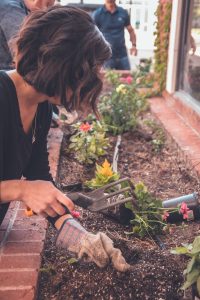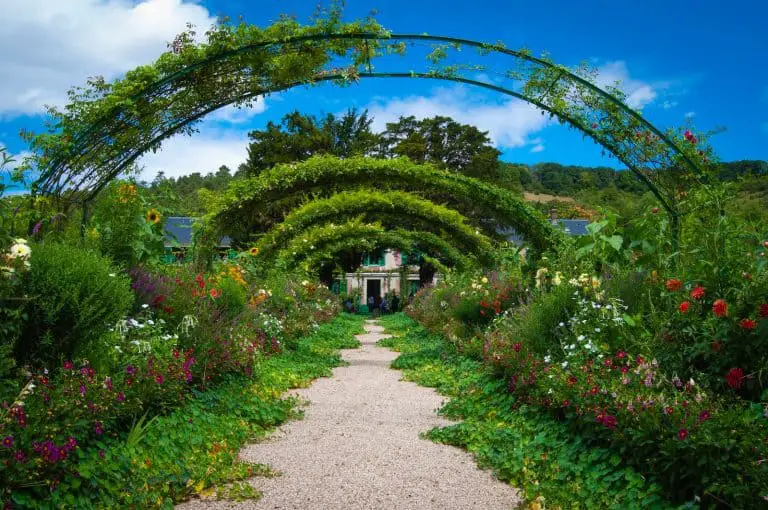Gardening is often seen as a luxury reserved for homeowners, but gardens for renters are becoming increasingly popular as people seek to enjoy the benefits of outdoor living spaces in their rented properties. Growing your own plants, herbs, and vegetables can be a rewarding and therapeutic experience, even if you don’t own the property you’re living in. With some creativity, planning, and flexibility, renters can enjoy beautiful and functional gardens in their temporary homes. This guide will provide you with rental garden ideas and tips for making the most of your rented outdoor space.
Understanding Your Rental Situation

Before you start planning your rented garden, it’s essential to understand the restrictions and limitations of your rental property. First, analyze your rental agreement for any garden-related restrictions, such as planting in the ground or making permanent installations. If you’re unsure, it’s always best to communicate with your landlord about your gardening plans and seek their permission. Additionally, assess your outdoor space and sunlight exposure to determine the best garden type for your rental home.
Choosing the Right Type of Garden for Your Rental
There are several different garden types that are well-suited to rental properties, each with its own advantages and disadvantages. Here are some rented garden ideas to consider:
1. Container Gardens
Container gardens are a popular choice for renters due to their portability, versatility, and ease of maintenance. By using a variety of pots, planters, and other containers, you can create a cohesive look and arrange them in your outdoor space to suit your preferences. When choosing containers, consider factors such as material, size, and drainage. You can also use outdoor furniture, such as shelves or benches, to display your potted plants and create an outdoor room.
2. Vertical Gardens
Vertical gardens are another excellent option for renters, especially those with limited outdoor space. These gardens make use of vertical structures, such as trellises, walls, and fences, to grow plants upward rather than outward. This can be a visually appealing and space-saving way to create a rental garden. Some examples of vertical garden structures include hanging baskets, wall-mounted planters, and custom-built frames. Ensure that any vertical garden installation is temporary and doesn’t cause damage to the rental property.
3. Raised Bed Gardens
Raised bed gardens are an attractive and practical option for renters, as they allow for better soil control and can be easier on the back. They can also be temporary, making them suitable for rental properties. To create a raised bed garden, build or purchase raised bed frames and fill them with soil and compost. Ensure your raised bed installation is temporary and does not cause damage to the property.
4. Community Gardens
If you don’t have suitable outdoor living space on your rental property or prefer a more social gardening experience, consider joining a community garden. These shared garden spaces foster social connections and provide access to larger plot sizes and shared resources. To find a community garden near you, search online or contact your local council or gardening clubs.
Selecting Plants for Your Rental Garden

When choosing plants for your rental garden, consider the following factors:
1. Climate and microclimate: Select plants that are well-suited to your local climate and the specific microclimate of your outdoor space. This will ensure that your plants thrive and require less maintenance.
2. Garden type compatibility: Choose plants that can be grown in your chosen garden type, whether that’s containers, vertical gardens, or raised beds. Some plants, such as ornamental grasses and small trees, can add interest and height to your garden without requiring much space.
3. Low-maintenance and easy-to-grow plants: As a renter, you may not have the time or resources to invest in high-maintenance plants. Opt for plants that are easy to grow and maintain, such as hardy perennials, succulents, and evergreen shrubs.
4. Edible plants and herbs: Incorporating edible plants and herbs into your rental garden not only adds visual interest but also provides a practical purpose. Consider growing herbs such as basil, mint, and rosemary, or vegetables like tomatoes, lettuce, and peppers.
Flower Beds for Rental Gardens
Creating flower beds is a great way to add colour and texture to your rental garden. To do this, first measure the area you want to use for your bed and create an outline with string or stakes. Next, remove any weeds from the area before adding soil and compost. Consider selecting sun-loving flowers such as daisies, snapdragons, and petunias for maximum blooms. Be mindful to select plants that complement each other in terms of colour, texture, and size. Finally, add mulch around the flowers to help keep moisture in the soil and protect their roots from overheating.
Tips for Maintaining a Rental Garden

Garden maintenance is necessary to ensure that your rental garden remains attractive and healthy. Here are some tips for keeping on top of your rental garden:
1. Watering and irrigation: Ensure your plants receive adequate water by setting up a simple and cost-effective watering system, such as a drip irrigation system or a soaker hose. Alternatively, hand-water your plants using a watering can or hose.
2. Pest control: Keep pests at bay without using harmful chemicals by opting for natural pest control methods, such as introducing beneficial insects, using organic insecticides, or practicing companion planting.
3. Fertilizing and soil management: Use organic fertilizers and compost to nourish your plants and maintain healthy soil. Regularly check the pH levels of your soil and adjust as needed.
4. Regular maintenance: Keep your garden looking its best by regularly pruning, deadheading, and weeding. This not only keeps your garden visually appealing but also promotes healthy plant growth.
Preparing for a Move: Taking Your Garden Space with You
As a renter, there’s always the possibility that you may need to move. When that time comes, you’ll want to take your garden with you. Here are some strategies for transplanting your rental garden:
1. Container gardens: These are the easiest to transport, as you can simply move the pots and planters to your new home. If some plants are too large or heavy to transport, consider taking cuttings or propagating them to start new plants.
2. Vertical gardens and raised beds: Dismantle these structures and transport them to your new home, along with the plants. Depending on the size and complexity of your vertical garden or raised bed, you may need to seek professional assistance.
3. Leaving a positive impression: Make sure you leave your rental property in good condition by cleaning up any debris or damage caused by your garden. This will not only help maintain a positive relationship with your landlord but also benefit future tenants.
Using Outdoor Rug to Spruce up a Rental Garden
Outdoor rugs can add a bright and vibrant touch to your rental garden. They are an affordable and simple way to enhance the aesthetic of your outdoor space without making any permanent changes. Choose durable and weather-resistant fabrics, such as woven polypropylene or acrylic, for long-lasting beauty. Opt for a rug with a pattern or bright colour to add visual interest, or go for a neutral hue if you want to keep things subtle. Just make sure the rug is large enough to cover the entire area of your garden, and that it has non-slip backing for added safety.
Adding Furniture and Accessories to Your Rental Garden
Furniture and accessories can help to create a comfortable and inviting atmosphere in your rental garden. Consider incorporating benches, chairs, or tables for al fresco dining. You could also add soft furnishings such as cushions or rugs to make the space cosy. For extra style points, use wall hangings and decorative lighting to add a touch of personality. Just remember that any furniture or accessories you choose should be durable and easy to transport in case you need to move on.
Final Thoughts: Gardens for Renters
Creating a beautiful and functional garden in your rented property is possible with some planning, creativity, and flexibility. Whether you opt for a container, vertical, or raised bed garden, there are plenty of rental garden ideas to suit your needs and preferences. By selecting the right plants, maintaining your garden, and preparing for a move, you can enjoy the benefits of gardening in your temporary home. Embrace your green thumb and transform your outdoor space into a sanctuary, even if it’s only for a short time.
Other suggested articles:

